by Shweta Patel

The URL structure is an important part of on-page SEO. Whenever I talk about URL structure, I prefer to split it into 4 major parts:
Permanent links – A permanent link is the unique URL of each page. Good URLs should be less than 255 characters and use hyphens to ‘-‘separate the different parts.
For example a good URL is: http://www.advanceidea.co.in/mobile-application-development.php
A bad URL is:
https://www.advanceidea.co.in/p?165 or
https://www.advanceidea.co.in/seotipsforbeginners/ or
https://www.reliablesoft.net/123131/publish/data2/seo_Tips.html
Categories – Group your pages into categories to help users and search engines find what they want faster.
It’s like having a warehouse with lots of uncategorised items versus a warehouse with all the items assigned to a dedicated category.
You can have sub-categories as well but my advice is not to go over one level. For example a good category structure is:
Advanceidea> Social Media > Facebook
and not
Advanceidea> Social Media > Facebook > Tips
Breadcrumb – A breadcrumb is also important for all your pages because it allows users to navigate your website in a structured way since they always know where they are and how deep below the home page.
User Sitemap – One of your options in your menu (either top or bottom) should be the User Sitemap.
This is an html file that represents the structure of your website. Visit my sitemap as an example.
Your title tag is the most important on-page SEO factor.
In general, the closer the keyword is to the beginning of the title tag, the more weight it has with search engines. Here’s an example from my Our Best SEO Company

Using modifiers like “2017”, “best”, “guide”, and “review” can help you rank for long tail versions of your target keyword.
The H1 tag is your “headline tag”. Most CMS’s (like WordPress) automatically add the H1 tag to your blog post title. If that’s the case, you’re all set.
But some themes override this setting. Check your site’s code to make sure your title gets the H1 love it deserves.
Include your target keyword in at least once subheading…and wrap it in an H2 tag. Here’s an example of this strategy in action (target keyword=”On Page SEO”)
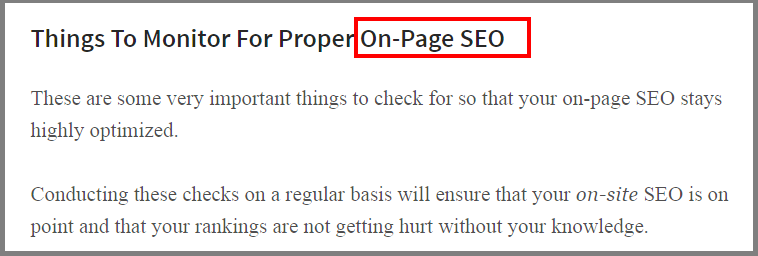
Your keyword should appear in the first 100-150 words of your article.
Instead, drop your keyword somewhere in the first 100 words or so. This helps Google understand what your page is all about.
Text can only take your content so far. Engaging images, videos and diagrams can reduce bounce rate and increase time on site: two critical user interaction ranking factors.
But it has a nice SEO benefit to boot: multimedia helps you boost those user-interaction signals that Google has been paying more attention to.
And it increases the perceived value of your content –which means that people are more likely to link to it.
Google started penalizing mobile unfriendly sites in 2015. And they’re likely crack down even more in the future. If you want to make your site mobile-friendly, I recommend Responsive Design.
This is an easy, white hat SEO strategy to get more traffic.
Outbound links to related pages helps Google figure out your page’s topic. It also shows Google that your page is a hub of quality info.
Keep in mind that the sites you link out to reflect on you. So make sure to link out to authority sites whenever possible.
Internal linking is SO money. Use 2-3 in every post.
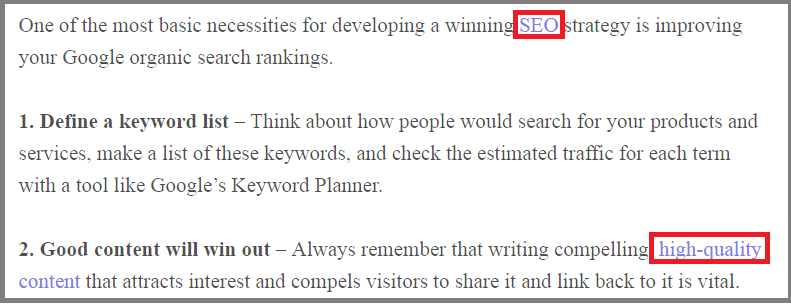
Google has stated on the record that page loading speed is an SEO ranking signal. You can boost your site speed by using a CDN, compressing images, and switching to faster hosting.
Make sure your site doesn’t take more than 4 seconds to load: MunchWeb found that 75% of users wouldn’t re-visit a site that took longer than 4 seconds to load.
You can easily check your site’s loading speed using the excellent GTMetrix.com:
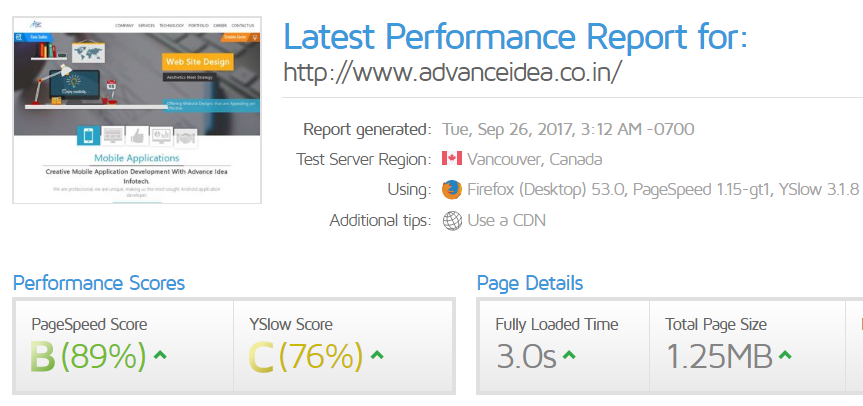
LSI keywords are synonyms that Google uses to determine a page’s relevancy (and possibly quality). Sprinkle them into every post.I
If you want to make 100% sure that you’re using LSI keywords, search for your keyword in Google and scroll down to the “Searches Related to…” area at the bottom of the page:
Add one or two of these into your post.
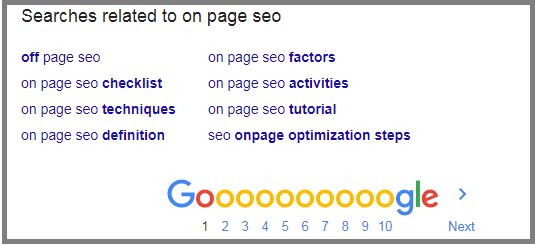
Make sure at least one image file name includes your target keyword (for example, on_page_SEO.png) and that your target keyword is part of your image Alt Text.
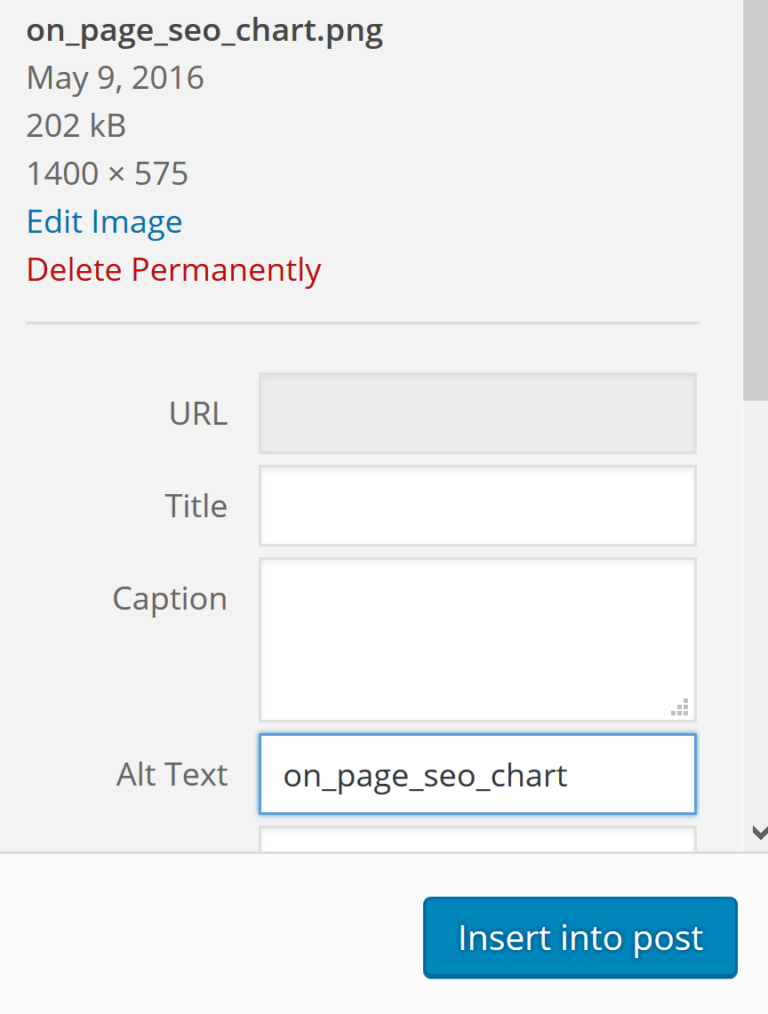
Social signals may not play a direct role in ranking your site. But social shares generate more eyeballs on your content.
And the more eyeballs you get, the more likely someone is to link to you. So don’t be shy about placing social sharing buttons prominently on your site.
The SEO adage “length is strength” was supported by our industry studywhich found that longer content tends to rank significantly higher on Google’s first page.
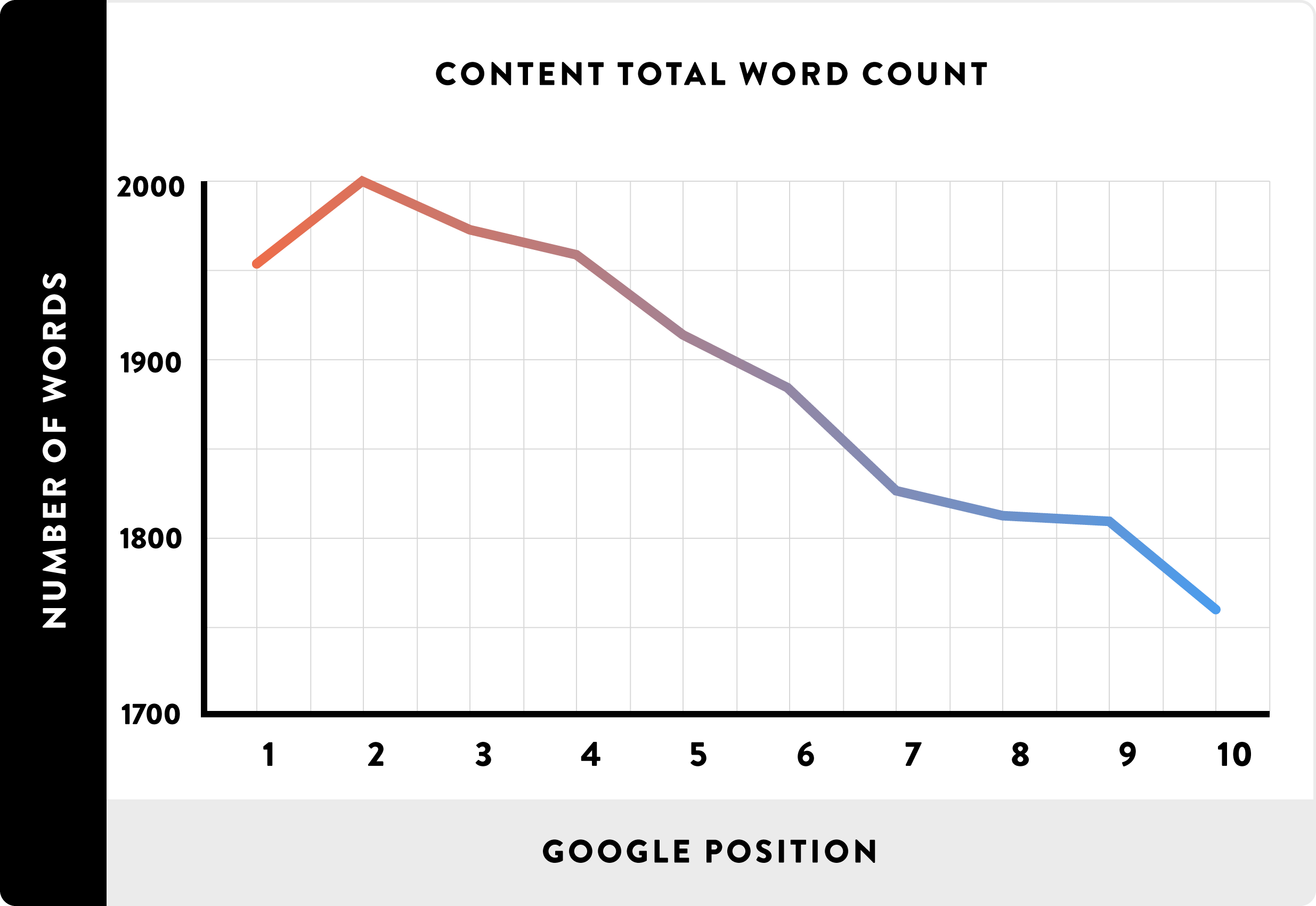
Aim for at least 1900 words for every piece of content that you publish.
Longer content helps you rank better for your target keyword and brings in more long tail traffic…a win-win!
If someone hits their back button immediately after landing on a page, it tells Google in black-and-white: this is low quality page.
That’s why Google uses “dwell time” to size up your content’s quality. Increase your average dwell time by writing long, engaging content that keeps people reading.
For Any kind of query contact to us.
Your email address will not be published. Required fields are marked *